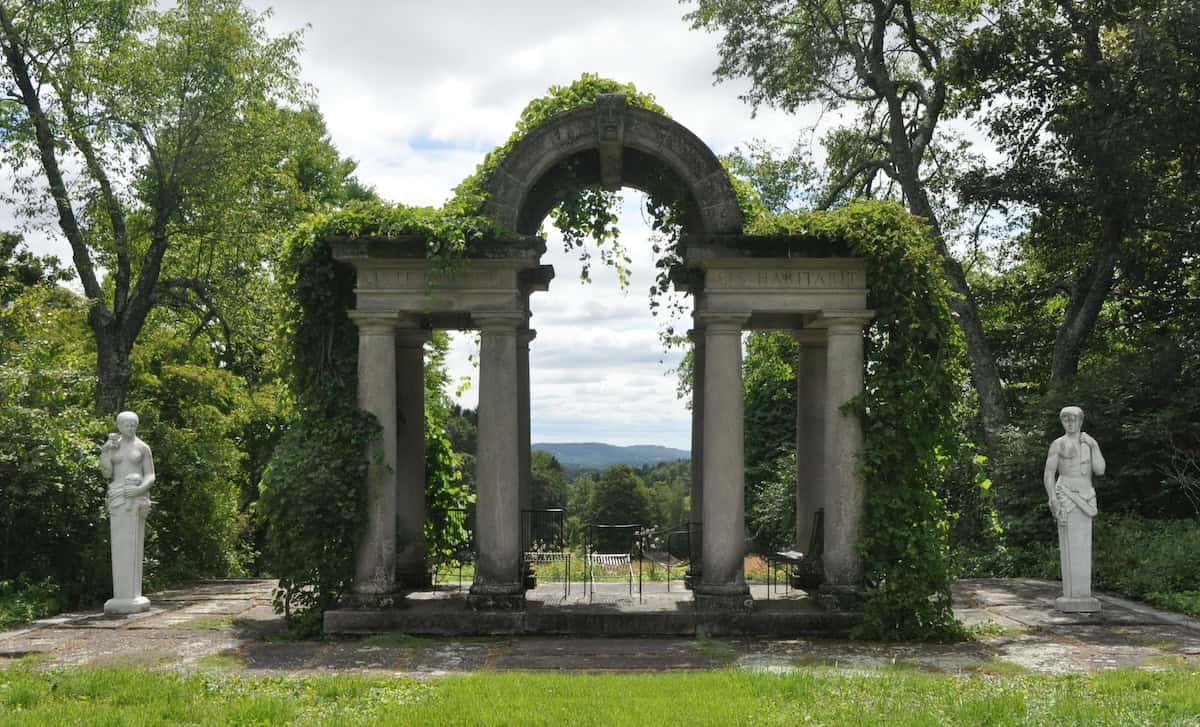This Month’s Featured Article
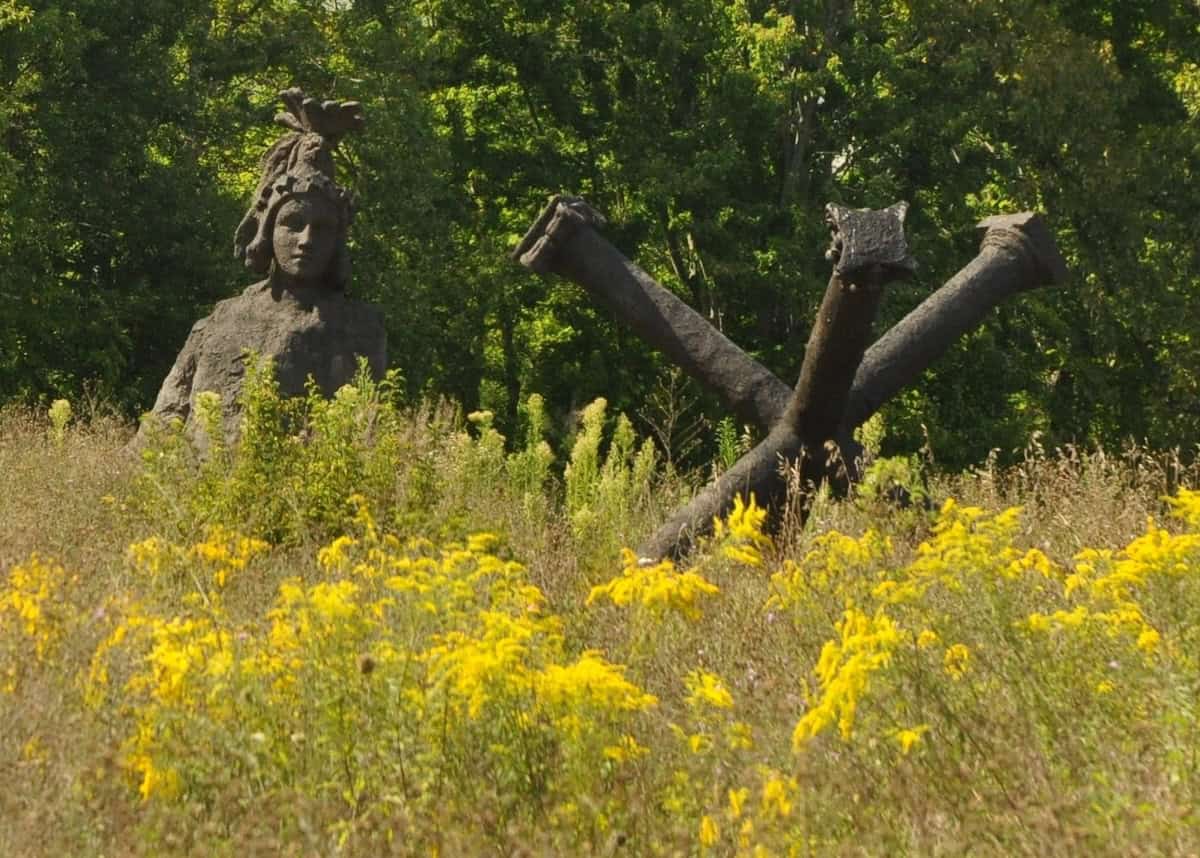
Outdoor sculpture spaces
Art Omi grows contemporary work in former farm fields
It would be blasphemy to talk about outdoor sculpture exhibits in this area without including Art Omi in Ghent, NY, where modest to massive contemporary works become part of the landscape, owning hilltops, filling fields, and tucking into hedge-rows of a one-time 120-acre dairy farm.
Francis J. Greenberger founded Art Omi as a residency program, on land he purchased after working at one. The park ‘organically grew’ as the art collector placed his own pieces into the landscape, and trails now lead through dozens of creations in the sculpture and architecture parks.
Their curation process has evolved over the years, following goals of displaying stimulating contemporary pieces appealing to a large audience and interacting with the nature they live in. In the past few years, emphasis has been on new commissions, as Art Omi becomes a place for artists to do their ‘wildest dreams’ projects. Artists from marginal communities are especially considered.
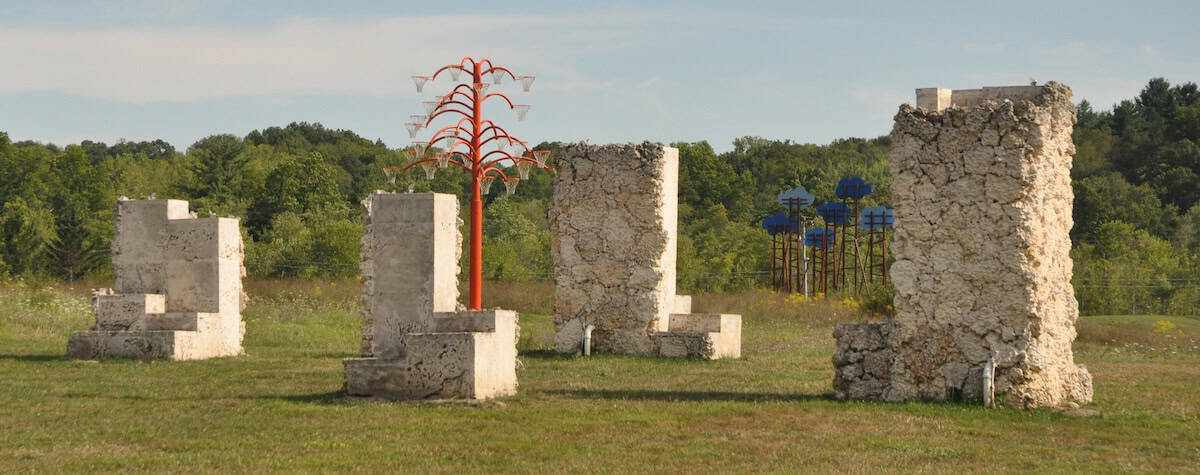
Greenberger’s collection is permanent; some other works are on loan. At least one new piece is added to each park every year. Their setting depends upon the artist’s vision for the work, how it fits with the surroundings and relates to nearby pieces, as well as where it will make the most sense to visitors.
The works are kept as the artist desired, with nature’s interactions ongoing. A team constantly checks for damage, which is mainly from weather; sun exposure requires re-staining wood, for example. There is very little vandalism, but there is ongoing bird poop.
Everyone at the venue has a different favorite piece. For one, that is a recent actual old-fashioned community-involved barn raising for the new piece, “Barn Raising-Part 2.” Another’s favorite is “Outcasts from the Underground,” a tower of sewer pipes, catch basins, and more, standing on the highest hill and climbable for views of the whole park.
There is no ‘A to B to C’ route to the trails, so visitors should bring a spirit of adventure and let their senses lead the way. Many pieces have signs prohibiting touching or climbing, but others are meant to be interactive, explored, touched. A brightly colored maze invites kids to run through.
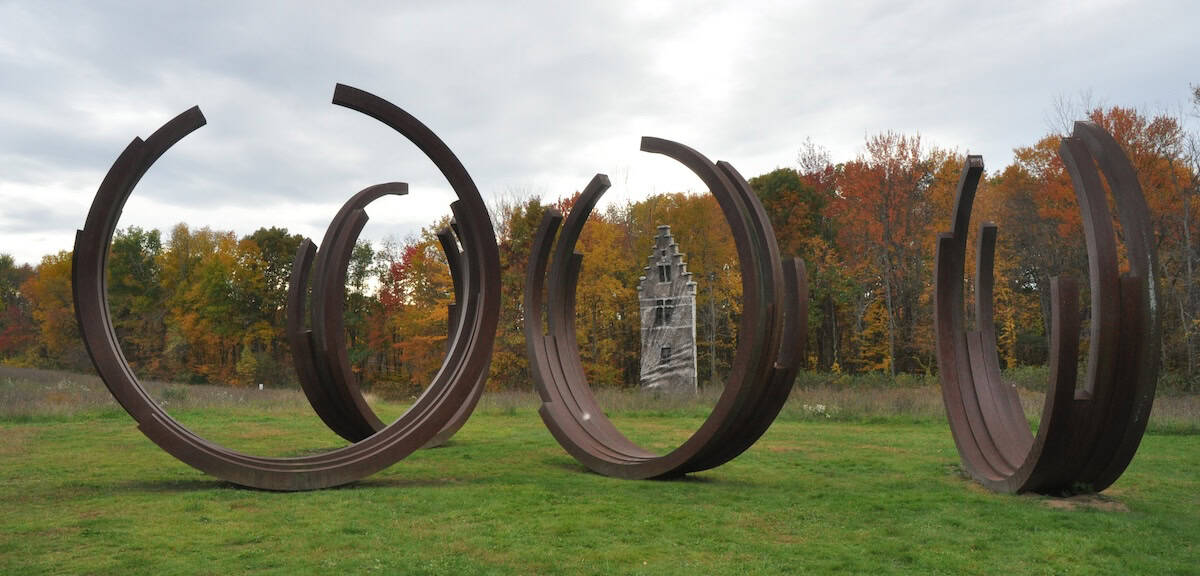
Art Omi welcomes everyone and very much appreciates being part of the community. Open year-round, there’s no best time to visit. Spring’s soft green new leaves on bare branches create their own artistry. In summer, bees buzz, butterflies flit through goldenrod (we know, allergies!), and blue cornflowers brighten trailside vistas. Fall’s blazing leaves lend warmth and color, and winter’s starkness and snow redefine each piece’s shape. The two-mile walk is an easy, enjoyable way to get your steps for the day.
Having grown up just a couple of miles away, I cannot help but wonder what the old Polish dairy farmer would think of what now sprouts up in his pastures and hay fields.
Visit Art Omi at 1405 Co Rte 22, Ghent, NY, or find out more at artomi.org.
Classic sculptures accent Wethersfield Estate’s Italian Renaissance garden
Wethersfield Estate in Amenia, NY, is off the beaten track. Way off. That does not mean you should not beat a track to its gate. Ignore the fact that the dirt road makes you think you’ll end up in a cow pasture. You won’t.
Where you will end up is at a country estate created on idle farmlands Chauncey Devereaux Stillman discovered while riding with the Millbrook Hunt in 1938. With forward-thinking use of contour farming to maximize crop yield and retention ponds to catch rainwater for irrigation, Stillman turned the land from barren to fruitful. The name Wethersfield was chosen as a reminder of Wethersfield, CT, where his family had first settled.
Sweeping views show farmlands surrounding the comfortably elegant brick home and a stable and carriage house. Stillman’s collection of carriages, plus his art and furniture, all reflect his high regard of classicism.
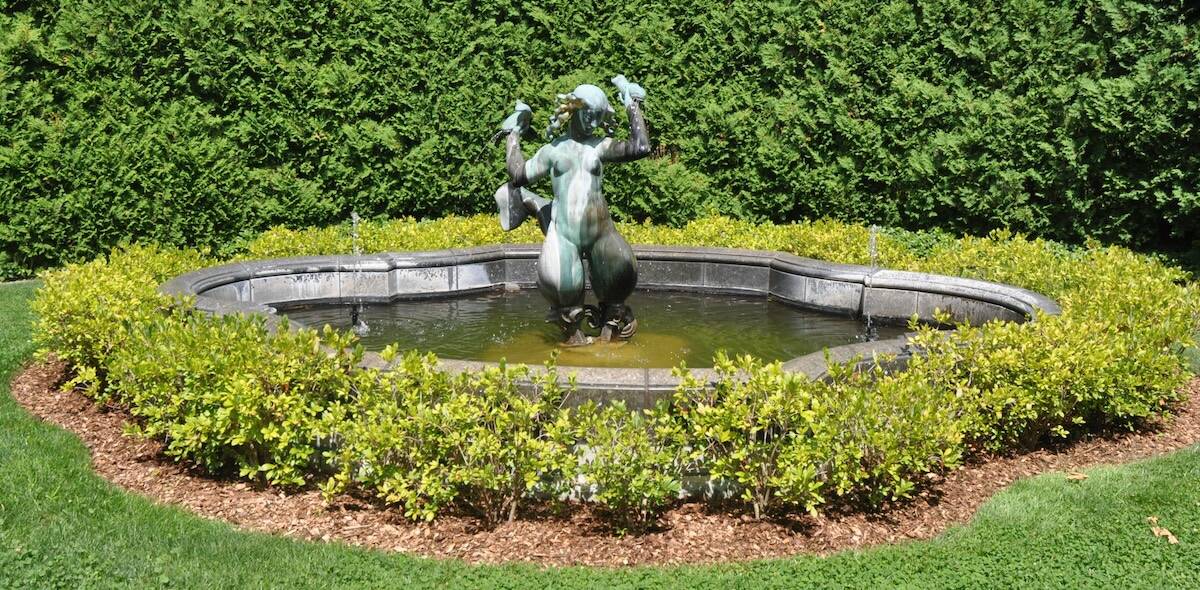
That extends to the Italian Renaissance gardens, which alone are stunning, and made more so with statuary pieces complementing and enhancing the plantings. Paths looping through them lead past the Cupid and Naiad fountains, Our Lady Immaculata, Japanese-style horses, Grecian-influenced human figures, urns, and obelisks. Most are classic, with bits of whimsy here and there. Between all are walls of stones from the property, courtyards with cobblestones from old New York City streets, pools, and peacocks (yes, live white peacocks).
Stillman worked with several artists to create his visions, among them sculptor Josef Stachura and landscape architect Evelyn Poehler, whose husband George Frederick Poehler designed the Palladian arch, which mirrors brick work on the wall below Stillman’s bedroom.
Our guide enthusiastically encouraged exploring beyond the formal areas, “to see the wilderness gardens, experience mature trees and plantings interspersed with Greek and Roman statues, culminating with the centaur.”
The statuary was created in the latter half of the 20th century. The pieces are covered with Tyvek for the winter, when the gardens are closed. Two were cleaned, but it was decided to leave others as they are, with natural aging showing. A veteran ‘master of the craft’ does necessary repairs.
Stillman is described as ‘a renaissance man,’ who created a wonderful garden and wanted to share the land and the hillside with his community. Children’s programs teach the importance of conservation and growing plants that help wildlife. Concerts with musicians from Bard College are held during the summer.
The home and carriage house are also open to visitation, and there are miles of hiking and horseback riding trails to explore. A return trip is already on our list. The gardens, home, and carriage house are open June through mid-October, Friday to Sunday; trails are open January to mid-November all week.
Wethersfield Estate’s Italian Renaissance garden is located at 257 Pugsley Hill Road, Amenia, NY, or visit their website at wethersfield.org.
